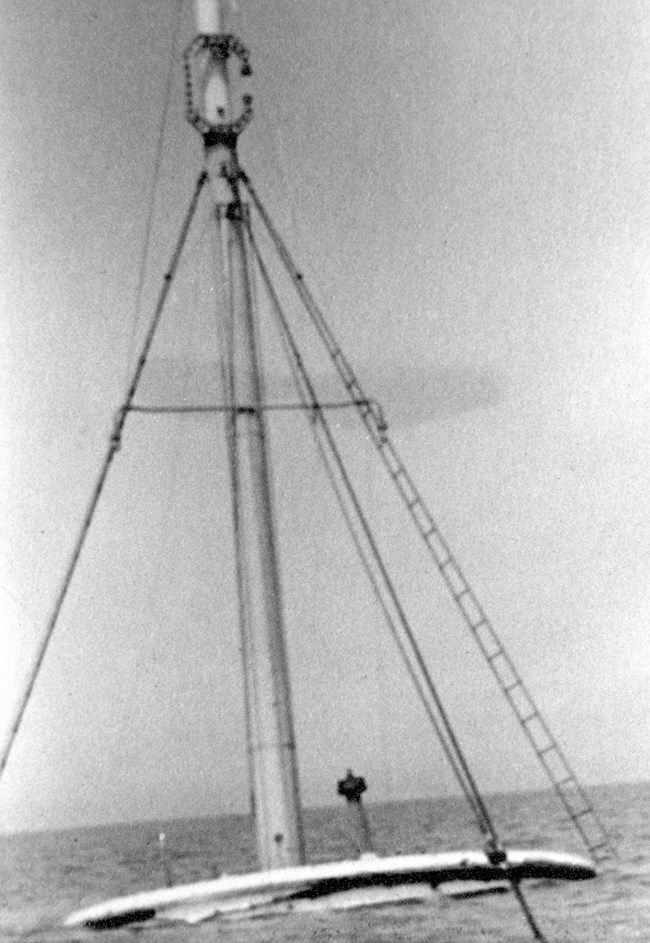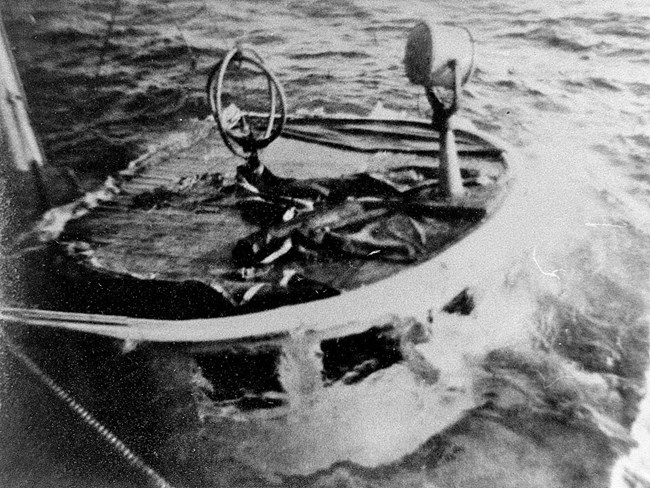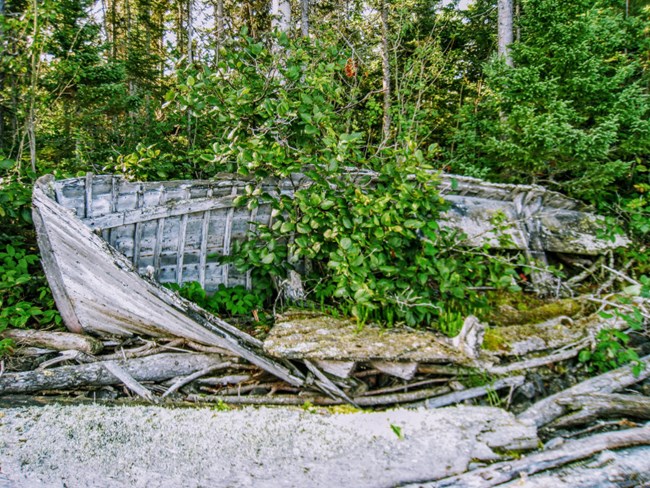Last updated: September 24, 2020
Article
SS Emperor: Wreck Event and Survivor Accounts

McPherren Collection
Wreck Event
Emperor struck Canoe Rocks off Isle Royale June 4, 1947 and sank in about 30 minutes. Three officers and nine crew were lost. The following account was developed from the official investigation of the disaster conducted by Canadian officials on June 6 and July 2 and 3, 1947:
Emperor had brought up a load of coal and unloaded at the coal docks at Ft. William. The freighter had immediately moved from the coal docks to the Port Arthur Iron Ore Dock to load ore. The loading of ore took six to seven hours. The first mate had supervised the loading and took the watch after they cleared the breakwall.
The doomed ship was laden with 10,429 tons of bulk iron ore (removed from the Steep Rock Mine) stowed in its five holds when she cleared Port Arthur at 10:55 p.m., June 3, downbound for Ashtabula, Ohio. The steamer was in seaworthy condition and well-equipped with suitable charts and sailing directions for the intended voyage. Emperor was also carrying a gyro compass, echo meter, sounding machine, ship-to-ship and ship-to-shore telephone and the "latest modern type of Marconi direction-finding equipment," in addition to the usual compasses and other equipment. Emperor, however, did not carry a full crew. There was no third mate.
The weather was good, the wind light and visibility excellent. These favorable conditions held for the short voyage. The navigation lights of Passage Light and Blake Point should have been clearly visible. Passage Island Light should have been visible from Trowbridge Light outside Thunder Cape, and Blake Point Light should have been visible for at least an hour before the wreck occurred.

Isle Royale National Park Archives
The watch sequence established that Capt. Eldon Walkinshaw had the watch until midnight when the first mate, James Morrey, took over. He had the watch from midnight to 6:00 am, and spent that time seated in a chair in the front of the wheelhouse. Evidence brought out that Morrey was in charge of loading the vessel in port before departure during most of the 6 hours he normally would have been off duty and, as a result, was probably overtired during his watch and fell asleep.
According to the testimony of J. Leonard, wheelsman, who was on duty the watch before the accident, the courses were plotted by the first mate at Thunder Cape. The course steered from Welcome Islands to Thunder Cape was 138 degrees true with a 2 degree alteration to pass the steamer Battleford. Leonard, who was inexperienced in the upper Lake region (this was his first time steering downbound from the Lakehead), believed the course was altered to 98 degrees true abreast of Trowbridge light. The mate did not take a four-point bearing, a bearing on the light, nor did he use the radio beacon on Passage Light. Leonard went off watch at 4:00 and stated Passage Island Light was 10° off the port bow. He turned the wheel over to J. Prokup. The mate did not check the course at the watch change.
There was no record of the ship's course until it passed Welcome Island at the mouth of Thunder Bay. At Thunder Cape Light, the normal downbound course should have been set to 98 degrees true; however, the court determined that the course was not set until the ship was abreast of Trowbridge Light, some 3 miles beyond Thunder Cape Light.

NPS
Emperor struck Canoe Rocks shortly before 4:15 am. According to various accounts, the ship stayed afloat from 20 to 35 minutes.
Two lifeboats were launched, one from each side of the ship, but both ran into difficulties. The one on the starboard side lost a bilge plug, and when the 10 sailors aboard were rescued, they were knee-deep in water. The port lifeboat pulled away from the wreck but was sucked under by the ship when it went down. Four men were clinging to it when the 125-foot, 250-ton cutter Kimball arrived, which had been in the vicinity of Isle Royale repairing navigation lights. The suction from the sinking ship also pulled crew members below the icy waters-some said they had been drawn down 30 to 40 feet as the freighter sank. Second Mate Peter Craven of Port McNicoll, Ontario said he was pulled under twice by the suction (Winnipeg Free Press, June 4, 1947).
Soon after the cutter arrived, the survivors began to relate stories of their grim struggle. There had been no panic after the ship struck. Eleven of the crew were still missing, including the captain, who was last seen on the bridge of his wrecked ship (Winnipeg Free Press, June 4, 1947).
Kimball picked up 21 survivors and the body of the first cook, Evelyn Shultz, of Owen Sound, Ontario. The survivors were brought to the Fort William City Dock on the Kaministiquia River at 8:30 a.m. The company gave each wreck survivor $100 for clothes and essentials. The survivors were transported to Emperor's downbound destination aboard a Canadian Pacific Railway sleeping car provided by Canada Steamship Lines.
When Kimball left the site with the survivors, the only trace of the ship above the water was the mast jutting some 15 feet above (Minneapolis Star, June 4, 1947). However, pictures taken after the wreck show the top of the pilothouse was exposed.
